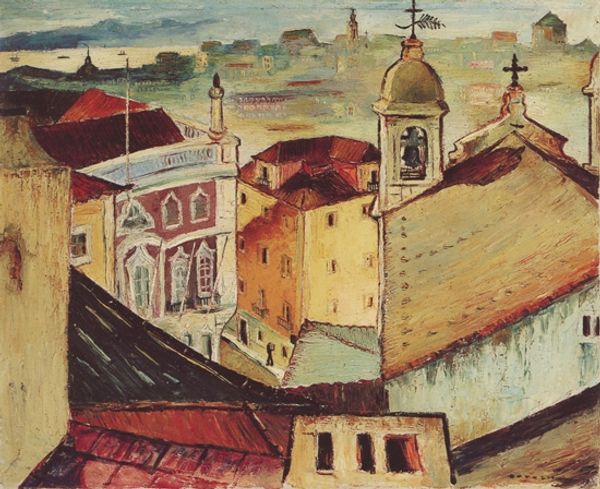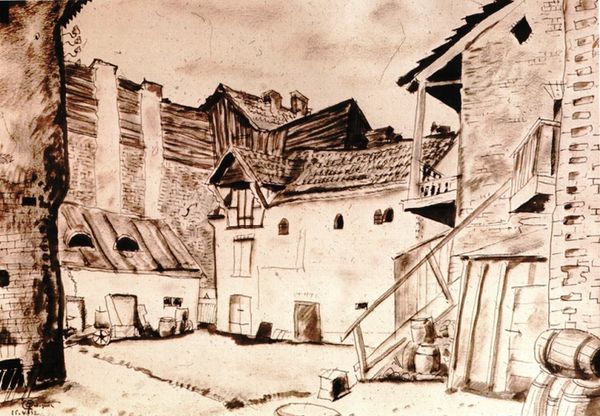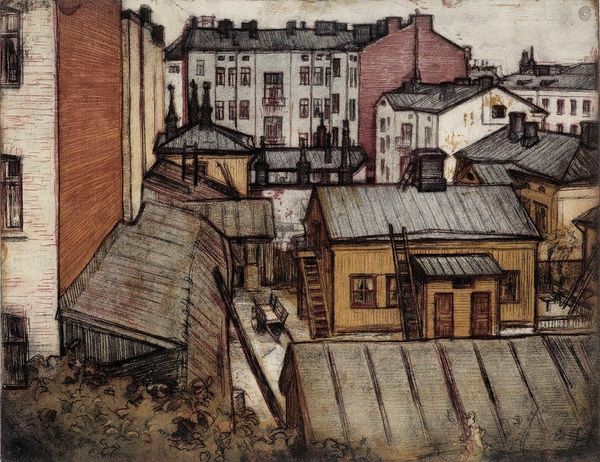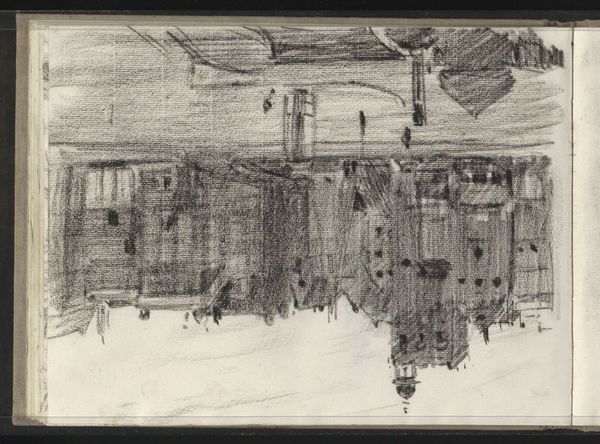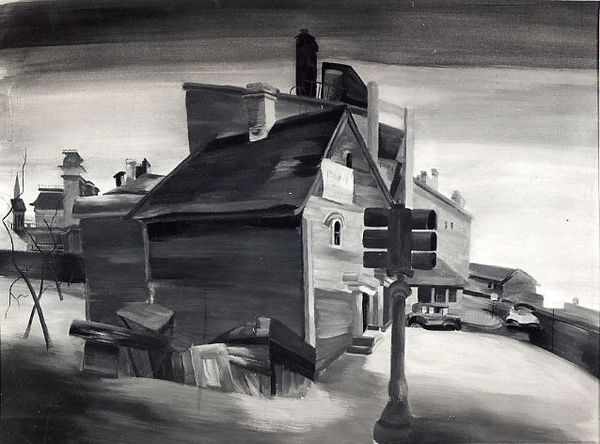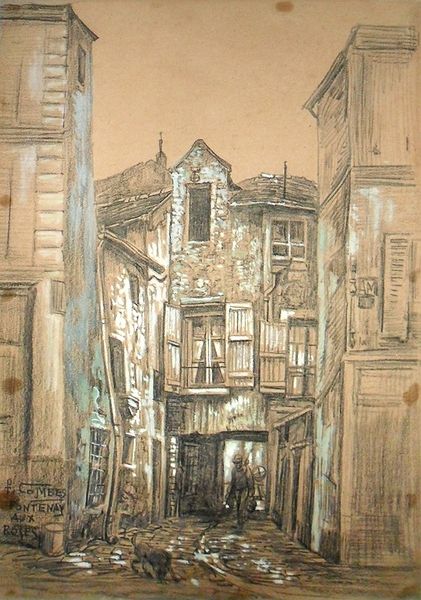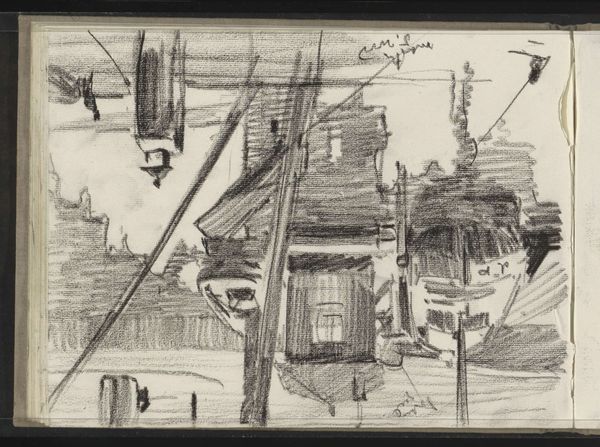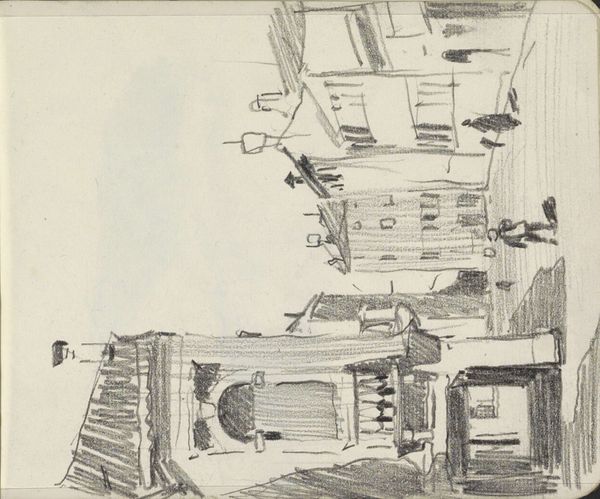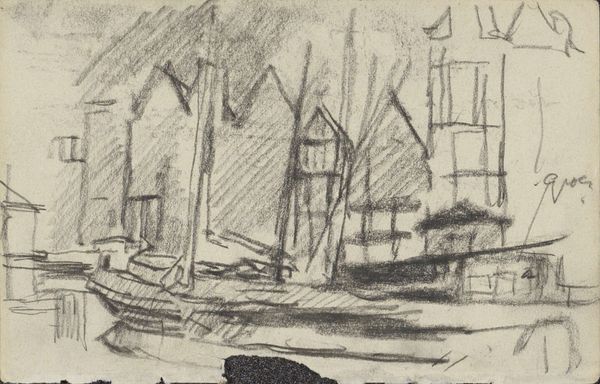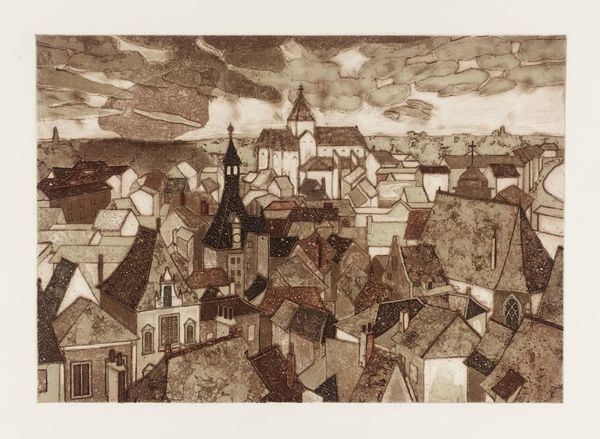
drawing, paper, ink, architecture
#
pen and ink
#
architectural sketch
#
tree
#
landscape illustration sketch
#
drawing
#
ink drawing
#
ink painting
#
mechanical pen drawing
#
pen sketch
#
paper
#
ink
#
pen-ink sketch
#
arch
#
square
#
pen work
#
russian-avant-garde
#
cityscape
#
street
#
architecture
#
environment sketch
Dimensions: 46 x 63 cm
Copyright: Public domain US
Curator: Dobuzhinsky's "Old City in Kaunas," created in 1923, captures a moment suspended in time using ink on paper. What do you first notice about it? Editor: It has this feeling of lived history, but there's also something a little melancholy about it, maybe the sepia tones. The structures feel incredibly sturdy, yet there’s also the implication of temporal fragility; like the history ingrained in these buildings might be under threat. Curator: I'm struck by how Dobuzhinsky, an artist deeply embedded in the Russian avant-garde movement, uses such a traditional medium to portray the spirit of Kaunas. Ink, historically significant, amplifies the scene’s gravitas. Note how line becomes both structure and shading here. The details! Editor: Absolutely. You get a sense that it might be about documenting what is present, but the careful attention to these wooden structures, each line deliberate, communicates the idea that there’s significance here; there are layers upon layers of socio-economic implications. The old city as both symbol and reality for this location. I see also a hierarchy implied in the buildings' relationship: that religious tower versus the somewhat rickety domestic structures. Curator: Notice how the architecture and surrounding structures, seemingly frozen, offer this sense of stability—perhaps of resistance even—amidst the backdrop of larger historical currents swirling throughout Europe at that time. Kaunas occupied a peculiar, strategic place; serving for a time as the temporary capital of Lithuania. Editor: I also read this tension, this balancing act between tradition and progress, order and chaos; a place rebuilding, even in its aged structures. Even more relevant considering this specific period between wars. It speaks to the complexities of identity when place itself becomes politically charged and contested. What’s retained? What's rebuilt and how? Curator: I'd say the continuity, embedded in its detailed depiction, grants Kaunas a space within our cultural memory. In his choice of such a traditional artistic vehicle, I notice a desire for a specific record – perhaps the enduring echo of a particular moment. Editor: I agree. And to really consider what such detailed attention signifies. The emotional work attached to documenting a place so firmly. It’s an illustration that asks questions, prompting one to imagine what those inhabitants saw, and what their legacies remain.
Comments
No comments
Be the first to comment and join the conversation on the ultimate creative platform.


